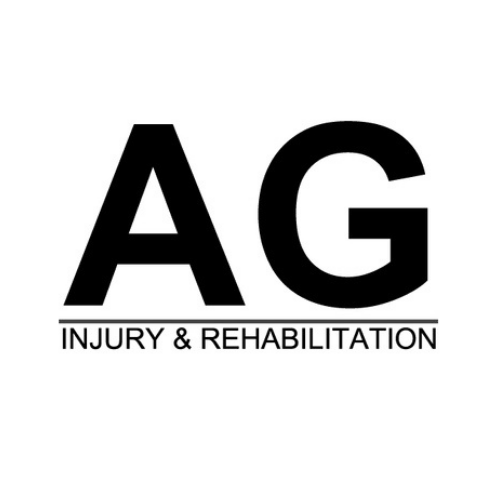Your legs just carried you through miles of pavement pounding, but what you do in the next few hours could make or break your next run. While many runners obsess over training plans and pace times, the secret to peak performance often lies in what happens after you cross the finish line.
The art of post-run recovery combines science and strategy, turning those exhausted muscles into stronger, more resilient running machines. From immediate cool-down routines to long-term recovery tactics, mastering these recovery techniques can transform your running journey from a cycle of fatigue to a path of continuous improvement.
Immediate Post-Run Recovery Steps
Cool-down Routine
Start with a 5-10 minute easy walk or light jog after your run. This helps bring your heart rate back to normal and stops blood from pooling in your legs. When you suddenly stop running, you risk feeling dizzy or light-headed.
Hydration Strategies
Replace lost fluids by drinking water right after your run. Sports drinks with electrolytes work well for runs lasting over an hour. Drink beyond the usual 6-8 glasses of water when you're training regularly to maintain proper hydration levels.
Post-run Nutrition
Eat within 30 minutes of finishing your run. A mix of carbs and protein helps your muscles recover. Quick options include:
- A banana with Greek yogurt
- A protein shake with fruit
- A turkey sandwich Follow up with a protein-rich meal within 2-3 hours to support muscle repair. This timing helps your body bounce back faster for your next training session.
Preventing Muscle Soreness
Foam Rolling for Recovery
Use a foam roller on tight muscles after your run to smooth out knots and reduce tension. Roll each major muscle group for 30-60 seconds, focusing on sore spots. Regular foam rolling improves your range of motion and helps you feel better for your next workout.
Compression Gear Benefits
Put on compression socks, shorts, or sleeves during or after your run. These garments boost blood flow to tired muscles and help reduce swelling. Many runners find compression gear especially helpful during long runs and the recovery period afterward.
Cold Therapy Options
Take a cold shower or ice bath after tough runs to fight inflammation. You can also apply ice packs to specific sore spots for 15-20 minutes. This approach works well for reducing muscle damage and speeding up recovery time. Start with shorter exposure times and gradually build up your tolerance to cold therapy.
Nutritional Advice for Recovery
Carbohydrate Intake
Fill up on carb-rich foods after your run to refill energy stores. Choose a mix of quick-acting and slow-burning carbs like fruits, sweet potatoes, and whole grains. This combination gives you immediate energy while supporting longer-term recovery needs.
Getting Enough Protein
Take in 20-30 grams of protein within two hours post-run. Good options include:
- Grilled chicken breast
- Hard-boiled eggs
- Tuna or salmon
- Lentils and beans This timing helps repair muscle tissue and reduces soreness the next day.
Fighting Inflammation
Add foods that fight inflammation to your post-run meals. Include:
- Colorful berries
- Dark leafy greens
- Salmon and other fatty fish
- Walnuts and almonds These foods contain natural compounds that speed up recovery and lower muscle soreness. Mix them into your regular meals or add them to smoothies for easy consumption.
Stretching Routines
Static Stretching
Wait until after your cool-down to do static stretches. Focus on the main running muscles: quads, hamstrings, calves, and glutes. Hold each stretch for 15-30 seconds without bouncing. This helps relieve sore muscles and improves flexibility after your run.
Dynamic Stretching
Start your run with moves like leg swings, lunges, and high knees. These active stretches warm up your muscles and get your joints moving. Add butt kicks and arm circles to prepare your whole body for running. Dynamic stretches reduce injury risk and boost your performance.
Yoga for Runners
Try simple yoga poses to help your muscles recover. Poses like downward dog stretch your calves and hamstrings, while pigeon pose opens tight hips. Child's pose and warrior poses help release tension in your back and legs. Practice these moves on rest days or after runs to improve flexibility and help your muscles relax.
Importance of Rest Days
Active Recovery Activities
Mix in light exercises on your off days to help your muscles recover. Walking, easy cycling, or swimming keep blood flowing without stressing your body. These recovery tips after runninghelp your legs stay loose while giving your running muscles time to rebuild.
Sleep and Recovery
Getting 7-9 hours of sleep each night plays a key role in muscle repair. Your body releases growth hormone during deep sleep, which fixes tissue damage from running. Make sleep a top priority during heavy training weeks to support your body's healing process.
Finding the Right Balance
Space out hard running days with rest days to avoid burnout. Pay attention to signs like lasting fatigue or decreased performance - these signal you need more recovery time. A good rule is taking one full rest day per week, with extra recovery days after particularly long or intense runs. Watch your weekly mileage and adjust your training based on how your body feels.
Recovery Tools and Techniques
Massage Therapy
Schedule regular sports massages to work out muscle knots and reduce tension. A good massage helps break up adhesions in your leg muscles and improves blood flow. Book sessions every 4-6 weeks during training, or after particularly tough runs when your muscles feel extra tight.
Electrical Muscle Stimulation
EMS devices send small electrical pulses to your muscles, helping them contract and relax. Apply the pads to sore spots for 15-20 minutes after running. This treatment works well for calves, quads, and hamstrings that need extra attention after long runs.
Compression Boots
Put on compression boots for 20-30 minutes post-run to speed up recovery. These boots use air pressure to squeeze your legs, pushing out waste products and bringing in fresh blood. Many runners find them especially helpful after runs longer than 90 minutes. Start with lower pressure settings and gradually increase as your legs get used to the sensation.
Monitoring Recovery Progress
Tracking Soreness Levels
Rate your muscle soreness on a scale of 1-10 each morning. Keep a simple log noting which muscle groups feel tight or painful. This data helps you spot patterns and adjust your training load. Many runners use phone apps or training journals to record these daily checks.
Using Heart Rate Variability
Check your heart rate variability (HRV) first thing each morning. Higher HRV scores often mean your body is ready for harder training. Lower scores suggest you need more rest. Wear a chest strap or smart watch to track these measurements. Make training choices based on your HRV trends rather than single readings.
Assessing Energy Levels
Track your daily energy using simple ratings - low, medium, or high. Note how you feel during regular activities and workouts. Watch for signs like dragging through easy runs or feeling tired all day. Pull back on training when energy stays low for several days. Good energy levels mean your recovery plan is working well and you're ready for your next challenging run.
Long-Term Recovery Strategies
Training Cycles
Plan your running schedule to include regular recovery periods. Alternate hard and easy weeks, with lighter workload every fourth week. This pattern lets your body repair and rebuild between tough training blocks. Adding a recovery week monthly helps prevent physical and mental burnout.
Cross-Training Benefits
Mix other activities into your routine to rest running-specific muscles. Swimming, cycling, and strength training work different movement patterns while maintaining fitness. These activities build overall strength and give your joints a break from running impact. Try two cross-training sessions weekly during heavy training periods.
Preventing Injuries
Build mileage slowly - increase weekly distance by no more than 10%. Add strength work targeting common weak spots like hips and glutes. Focus on proper running form, especially when tired. Land softly with your feet under your body, not ahead. Consider getting a running form analysis to spot potential issues before they cause problems. Regular mobility work keeps joints moving well and muscles working properly.
Mental Recovery Aspects
Stress Management
Practice deep breathing after hard runs to calm your mind and body. Take 5-10 slow breaths, focusing on lengthening your exhales. Listen to calming music or read a book during your recovery time. These simple activities help your mind shift away from training stress. Many runners find that short walks in nature help prevent mental burnout.
Mindfulness and Meditation
Take 10 minutes post-run to sit quietly and scan your body. Notice areas of tension or fatigue without trying to change them. Use meditation apps to guide you through basic relaxation exercises. Simple body awareness helps you spot early signs of overtraining and make better recovery choices.
Goal Setting
Write down specific targets for your next training block. Break big goals into smaller weekly objectives. Examples include:
- Adding one mile to your long run
- Running hills once per week
- Improving your recovery routine Review these goals weekly and adjust based on how your body responds. Keep a training log to track progress and celebrate small wins along the way. This structured approach helps maintain focus while giving your body time to achieve peak performance.
Adapting Recovery for Different Run Types
Marathon vs. Long Run Recovery
Take 2-3 weeks to recover after marathons, compared to 2-3 days for regular long runs. Start with complete rest for 3-4 days after a marathon, then add light walking. Return to easy running after 10-14 days. For standard long runs, take one full rest day followed by an easy run day.
Trail vs. Road Recovery
Trail running needs extra attention for ankles and lower legs due to uneven ground. Add ankle mobility exercises and calf stretches to your post-trail routine. Ice your feet and ankles after technical trail runs. Road runners should focus more on hip and knee recovery since these joints handle repetitive impact on hard surfaces.
Recovery by Run Intensity
Match your recovery time to your workout effort. After speed sessions, take 24-48 hours before your next hard run. For easy runs under an hour, a night's rest often works well. Monitor your heart rate during runs - higher average rates need longer recovery periods. Adjust nutrition and hydration after intense runs compared to easy days.
The Road to Better Recovery
Effective recovery isn't just about following a checklist—it's about creating a sustainable practice that evolves with your running journey. By incorporating these recovery strategies into your routine, you're not just preventing injury and reducing soreness; you're building a foundation for stronger, more enjoyable runs.
Remember that recovery is as individual as your running style. Listen to your body, adjust these techniques to your needs, and stay consistent with your recovery routine. Your future runs—and your body—will thank you for the extra attention to recovery details.

